Isabelle inspects the property and notices that some of our cultivated Bloodroot has jumped the fence into the park where it grows naturally and has established itself amongst the invasive Lesser Celandine.
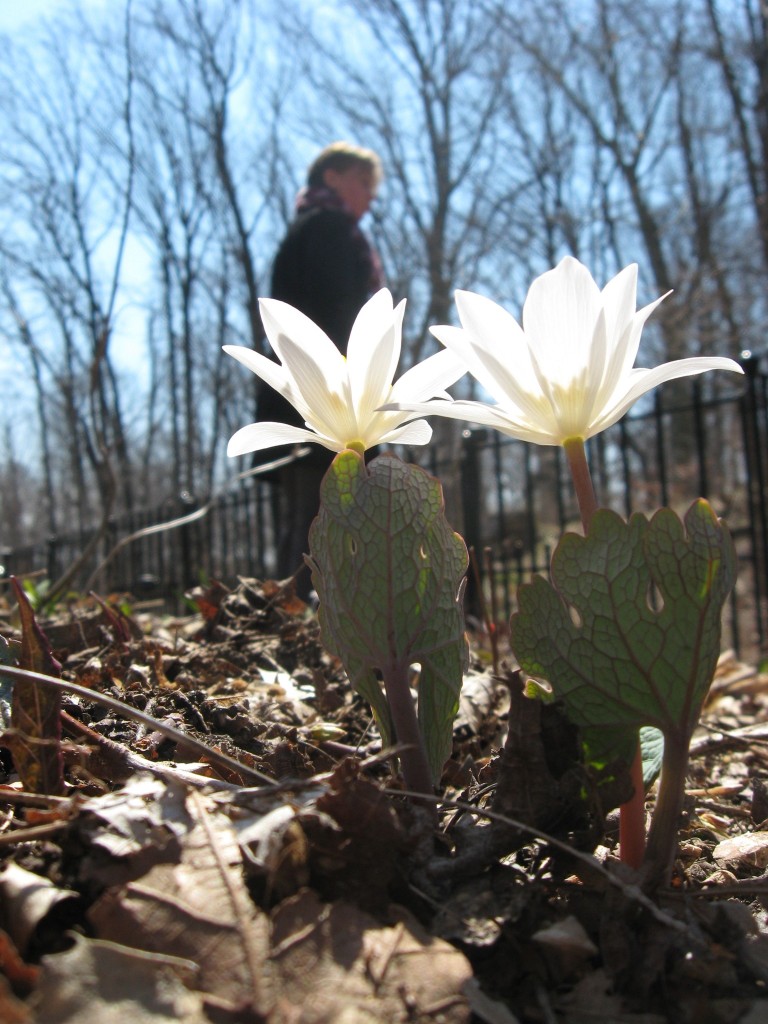
Usually its the other way around- Invasive cultivated plants such as English Ivy, Asian wisteria, Japanese Pachysandra  jump the garden fence from a neighborhood into a natural area. For once its the other way around!
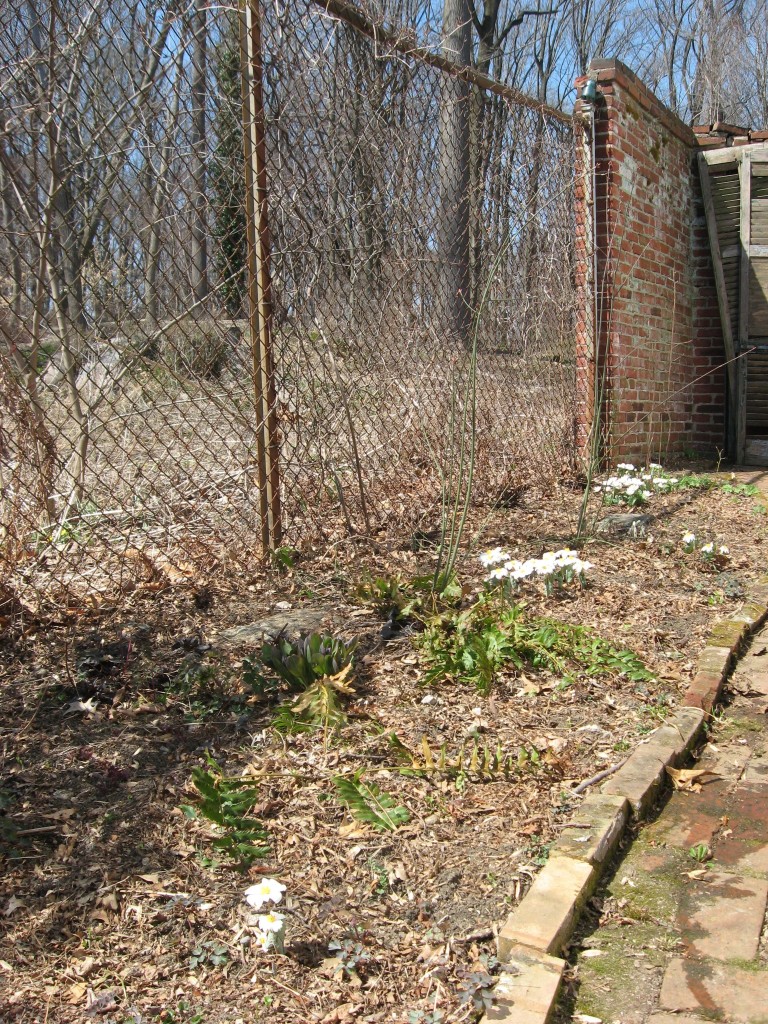
Here is the scene in the side yard, in the balmy early afternoon sun, the best time to enjoy the blooming Bloodroot. Each patch is different and the flowers have a different personality, for this is a highly variable species, the Sanguinaria canadensis.
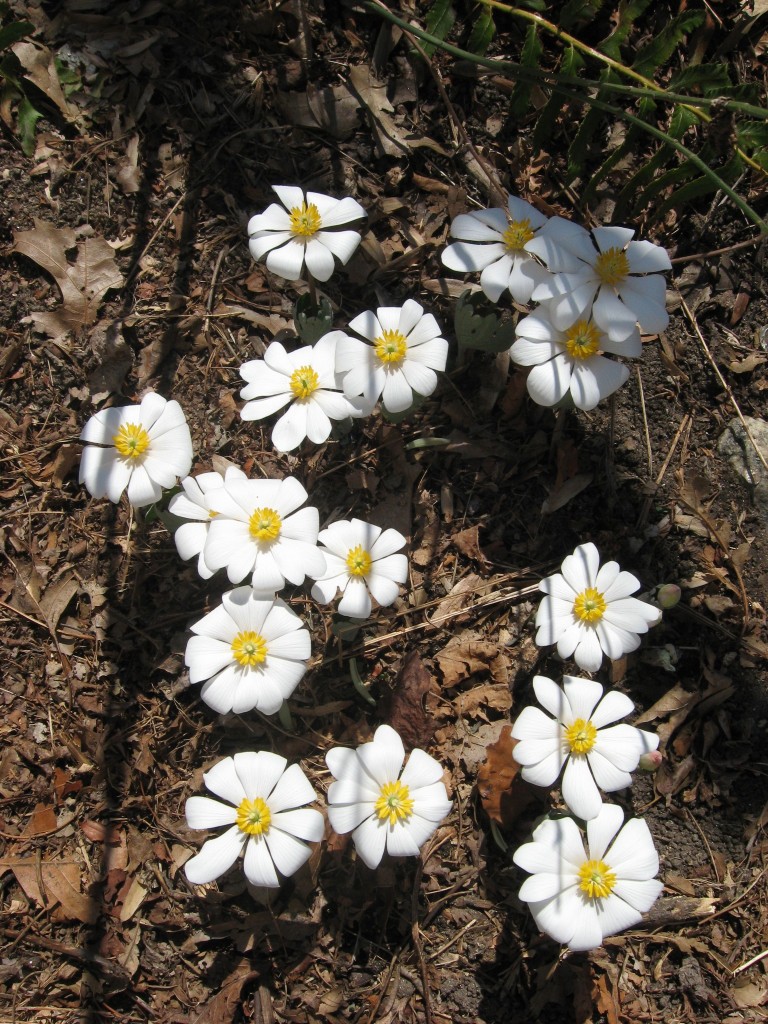 The Patch pictured above has wide petals that curl back at the tips, giving them the look of a Victorian patio chair.
The Patch pictured above has wide petals that curl back at the tips, giving them the look of a Victorian patio chair.
Just a few feet away, another patch has upward pointing petals.
Today was sunny and much warmer, and out come the pollinating bees! Â Today was the ideal day for the early blooming Bloodroot specimens, with temps in the upper 50s to low 60s!
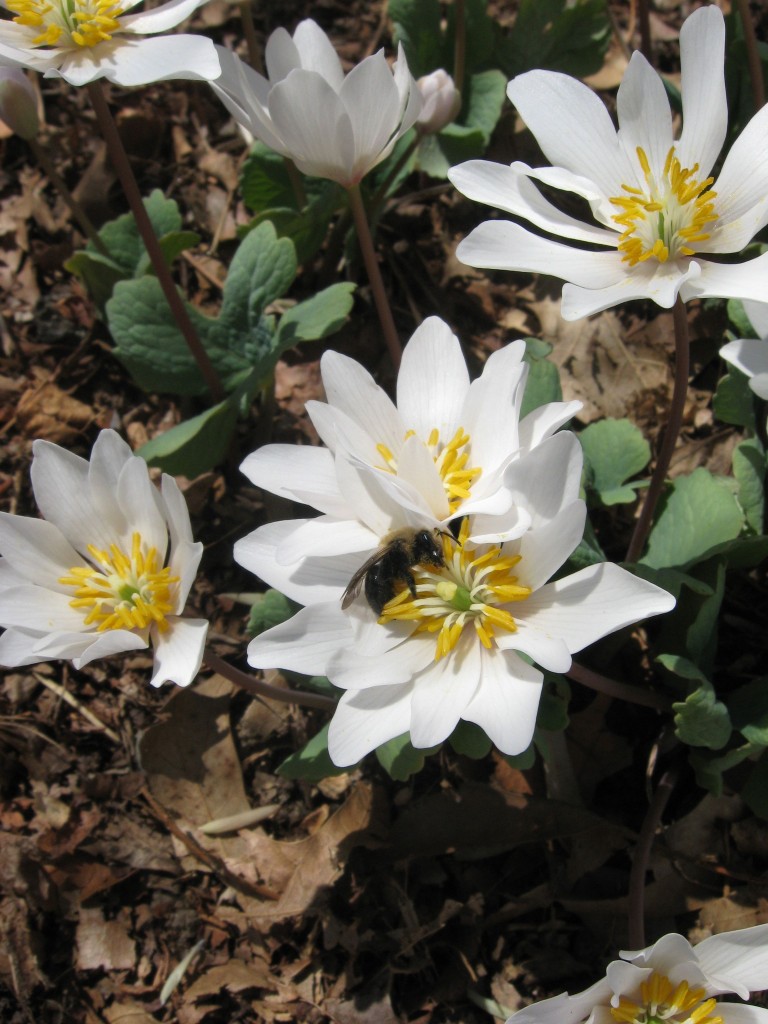
This bee was watched going from flower to flower and from patch to patch, spreading the pollen and insuring healthy, viable seed to come as the genetic exchange is diversified.
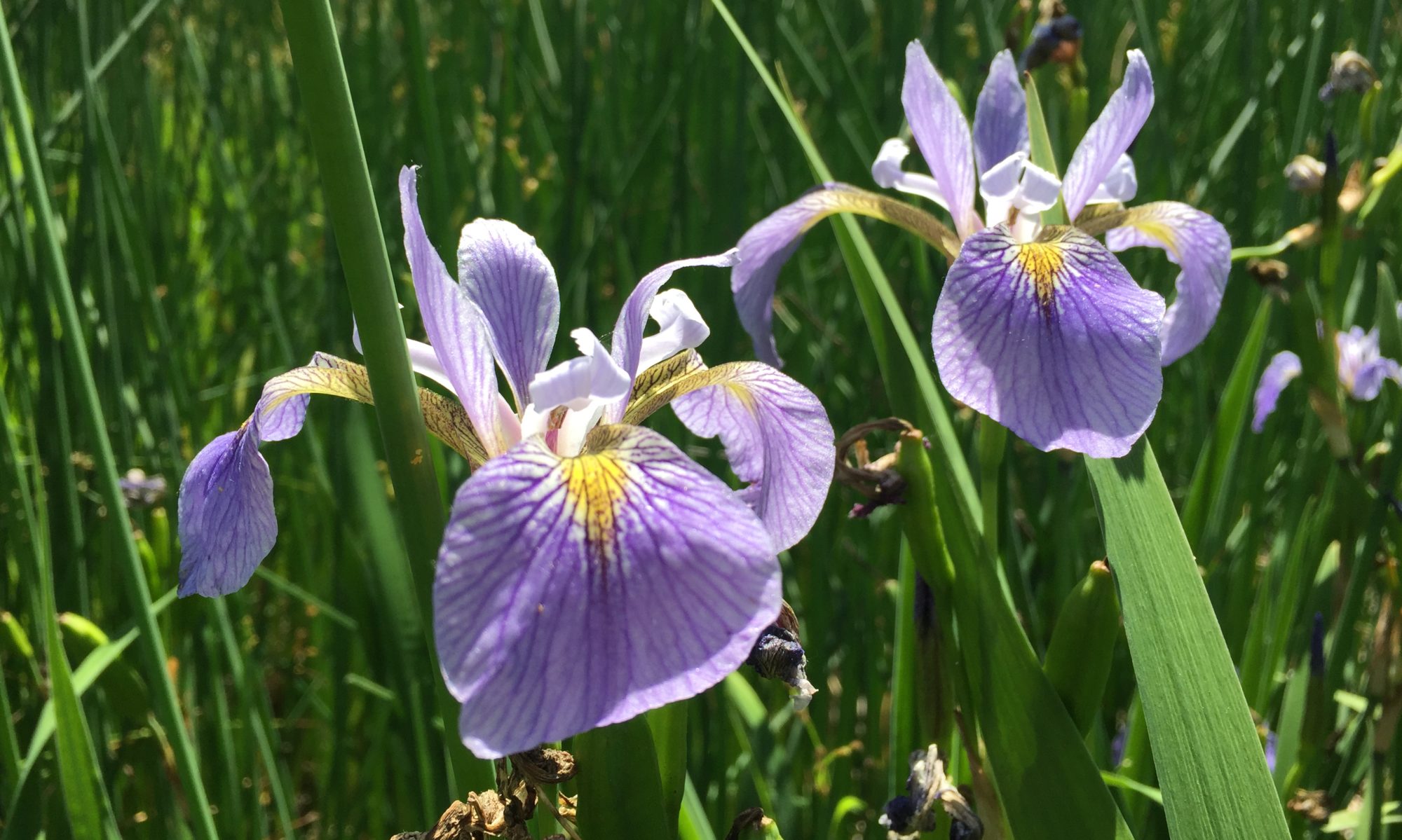
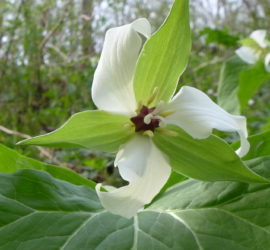

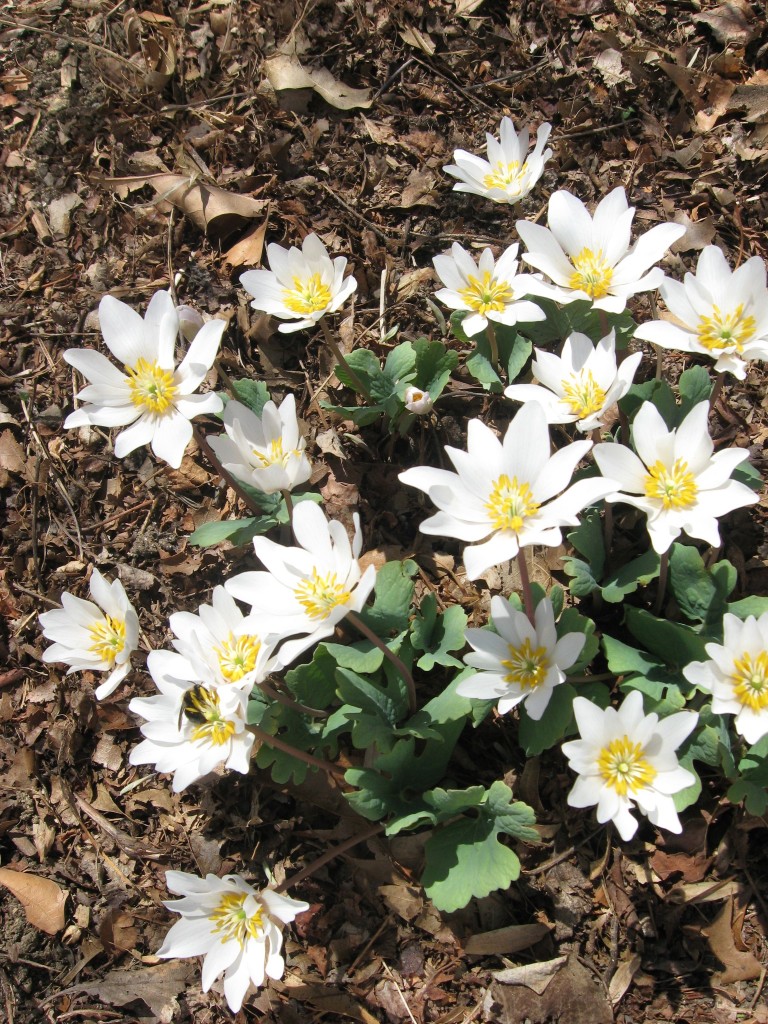
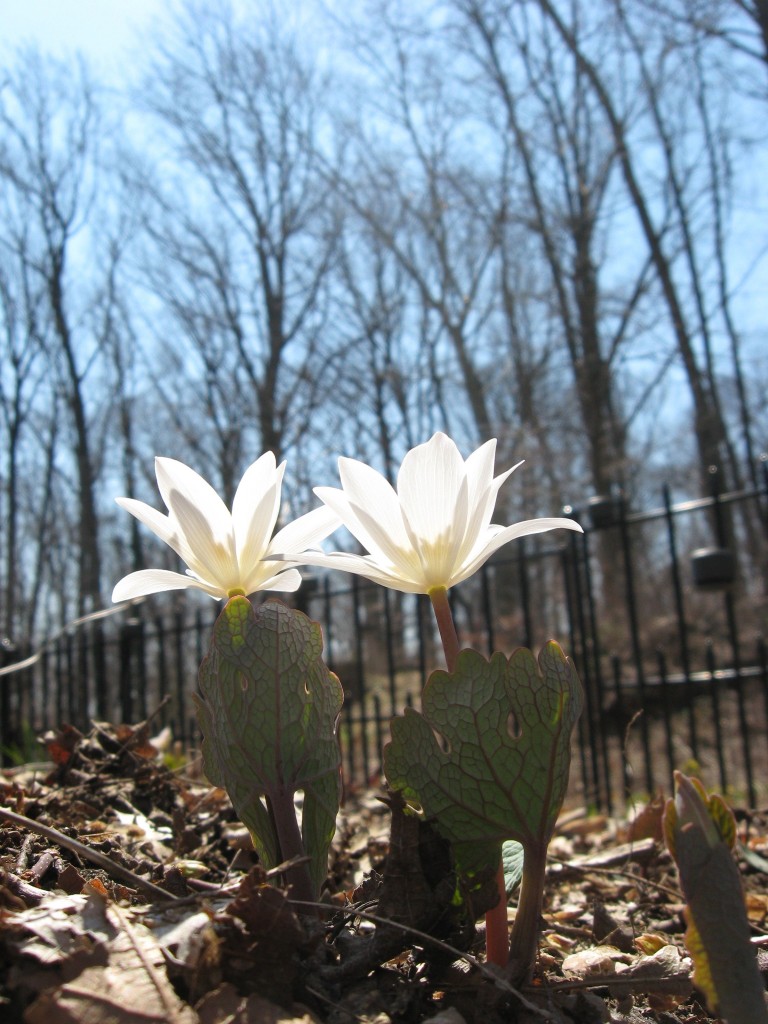
The bumble bee (there are hundreds of species), are almost certainly native , unlike the European honey bee our agriculture is so dependent on. The queen alone survives the winter, so she’s been busy raising a new generation to go forth and polonize indiginous flowers–like Sanguinarius Candenesis.
We need to be sophisticated about invasives.. as migration of species occurs without human help… and not all invasives are destrutive. The honey bee is a good example, though these relationships are complicated. Many of the truely invasive European flowers depend on the honey bee. Why it’s never good to artifically introduce a new specie of plant or animal into an established eco-system.
thoughtful comment, Jacob. The issue of pollination is a good one when we consider the effects of habitat loss and the outright mis-management and mis-use of land.
It looks like you have good evidence of a bumble bee lying down on the job.
Great place for a bee nap!
I saw some flowers just like these near our stone circle today.
Take pictures so we can see and identify them.